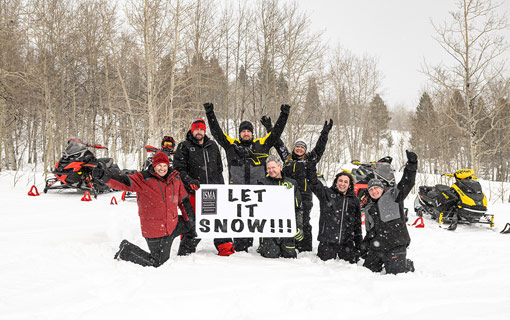Effective engagement with members of congress
For the past 15 years I have felt it necessary to make regular trips to Washington DC to promote snowmobile enthusiasts’ access to public lands. These trips, initially prompted by the Clinton Administration’s proposed ban on snowmobiles in all National Parks, have given me a healthy perspective on the challenges facing those who petition Congress on behalf of “special interests.”
For snowmobile enthusiasts, the media’s assignment of a negative image to our “special interest’ of maintaining public access to public lands complicates our mission. Specifically, Members of Congress from areas outside the snowbelt have been led to believe that our use of public lands is a net detriment to those lands. To counter this, most of my time in Washington DC is spent undertaking non-partisan educational outreach to Senators and Members of Congress from states where it rarely, if ever, snows. Because every vote counts, every newly elected Congressman or Senator receives a full briefing on our issues. From the most conservative district in Texas to the most liberal in California, Members and staff in each office are educated on the tremendous improvement in environmental performance from our sleds and the significant economic benefits generated by enthusiasts using a trail system painstakingly built and maintained by the dedicated volunteers who form the heart of every local snowmobile club.
As important as it is for me to educate the Members, it is even more important that you effectively engage your own Member of Congress or Senator to ensure that they are an advocate for your interests. While that may sound as attractive as a root canal to many of you, it is important that you use your constitutional right to petition your elected officials. To assist you in this effort, following are suggestions on how to be effective when interacting with offices.
- Research Your Topic Before Requesting a Meeting
Prior to making a call, develop a thorough understanding of the issue you wish to raise and the Member’s position (if any) on that issue. On emerging issues, your chances of securing a favorable outcome are enhanced if you contact the office before the Member has formed a policy position. If it is a settled issue, understand that Members rarely change a prior position. - Be Realistic in Your Expectations
A demand that Congress balance the budget in 2016 is unrealistic. Requesting a Member to embrace the tough policy choices required to generate a balanced budget by 2025 is realistic. And so it is with our issues: demand unfettered access to wilderness areas is unrealistic, while requesting reasonable access to non-wilderness areas is realistic. - Be Concise, Polite, and Positive in Your Discussion
There are slightly less than 800,000 constituents in each Congressional District. While 30 minutes of face time with your Congressman/staff does not seem like much to ask after an arduous trip to DC (or his/her district office,) if each constituent demanded 30 minutes of time with their member they would have a hard time doing the job we elected them for (whatever that is these days!) So:- Craft a 5 or 10 minute script for your meeting and leave some time for dialogue with the person you are meeting with.
- Do not become agitated if the Member is neutral or disagrees with your position, as it never leads to positive outcomes. Offending a Member or staffer could change their attitude from a neutral opponent to a dedicated opponent.
- Seek out areas where a positive discussion is possible, and then ease into areas of potential disagreement. Keep your radar up and if the feedback is negative, pull back and find something else positive to discuss.
- Be Patient – Don’t Expect Overnight Results or Miracles
Most Members – even the Speaker of the House – are very limited in what they can do. A determined opponent can be a formidable obstacle to the change you are seeking, so give Members a chance to advance your proposal. Call the office from time to time to make sure that the Member is up to speed on the latest developments on your issue. Offer to engage allies in other states to help generate support from other Members of Congress. And, make sure that your friends and neighbors are made aware of the effort being put forth by your Member of Congress. - Invite Them to a Community Event
During the 100 or so annual office visits in Washington I am amazed at the large number of people who are completely unaware of the work put forth by the local clubs to make snowmobiling such a wonderful recreational and economic activity. There is nothing like first-hand experience with a knowledgeable guide to open the eyes of policy makers to the importance of snowmobiling. Seeing truly is believing, so invite your Member of Congress for a ride with your club. The Congressional gift ban prevents them from accepting anything of value, so keep the trip simple and maximize the face time the Member has with the local club and businesses. Invite a staff member as well. They may have the time available and will pass on the good word. - Thank Them for Making Time for You
Never underestimate the power of a “Thank You.” A kind word of thanks will pay dividends for you and your fellow club members.
For The Love of Snowmobiling!
Photos
Browse our collection of snowmobile safety videos, public service announcements and snowmobile photos.
Snowmobile safety
These safety resources will ensure your next ride will be a safe and fun one for all!
Posters & projects
Download exclusive snowmobiling posters and our fun kid activities!
News & events
Stay informed about the latest news about our favorite recreation and find a snowmobiling event in your state.














